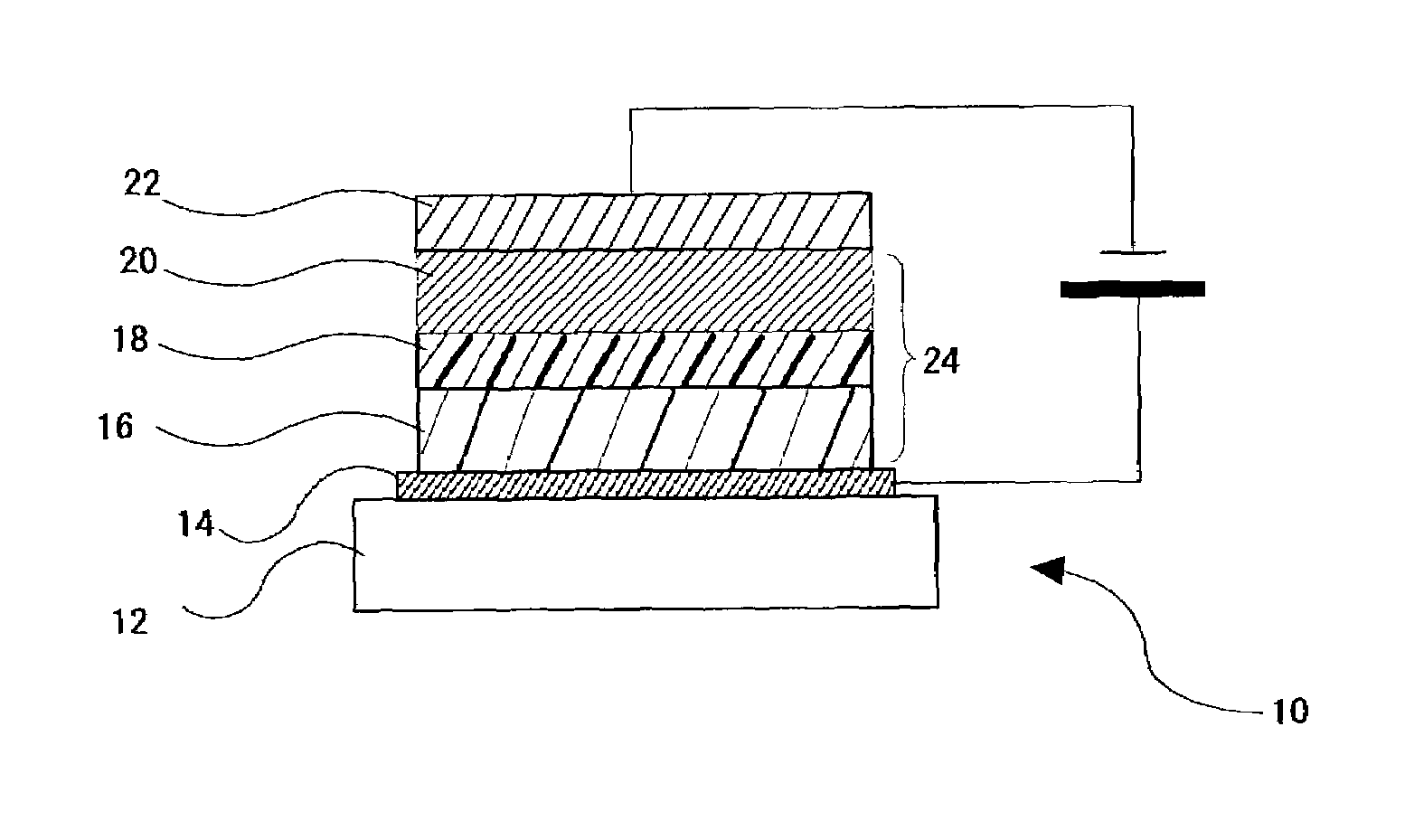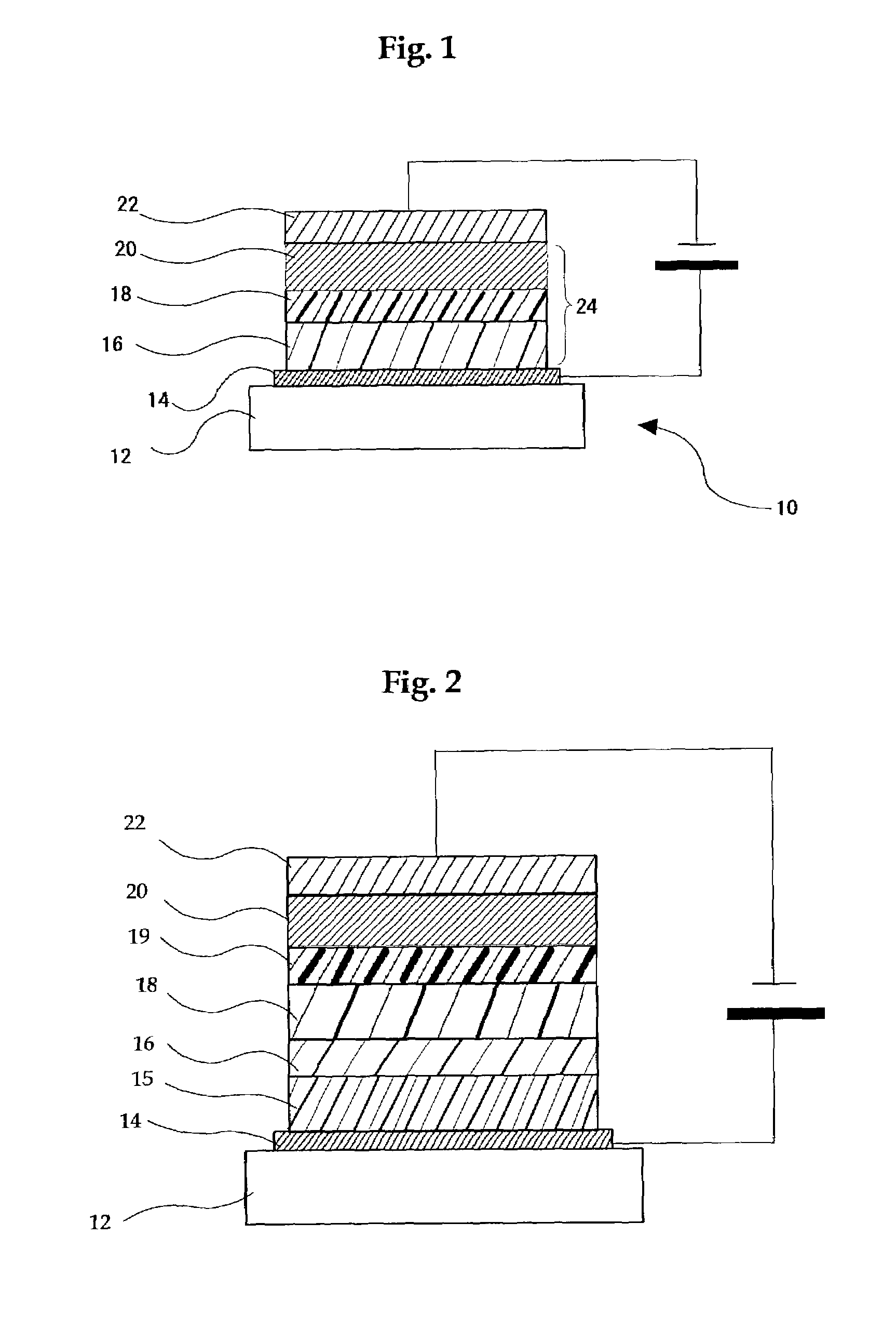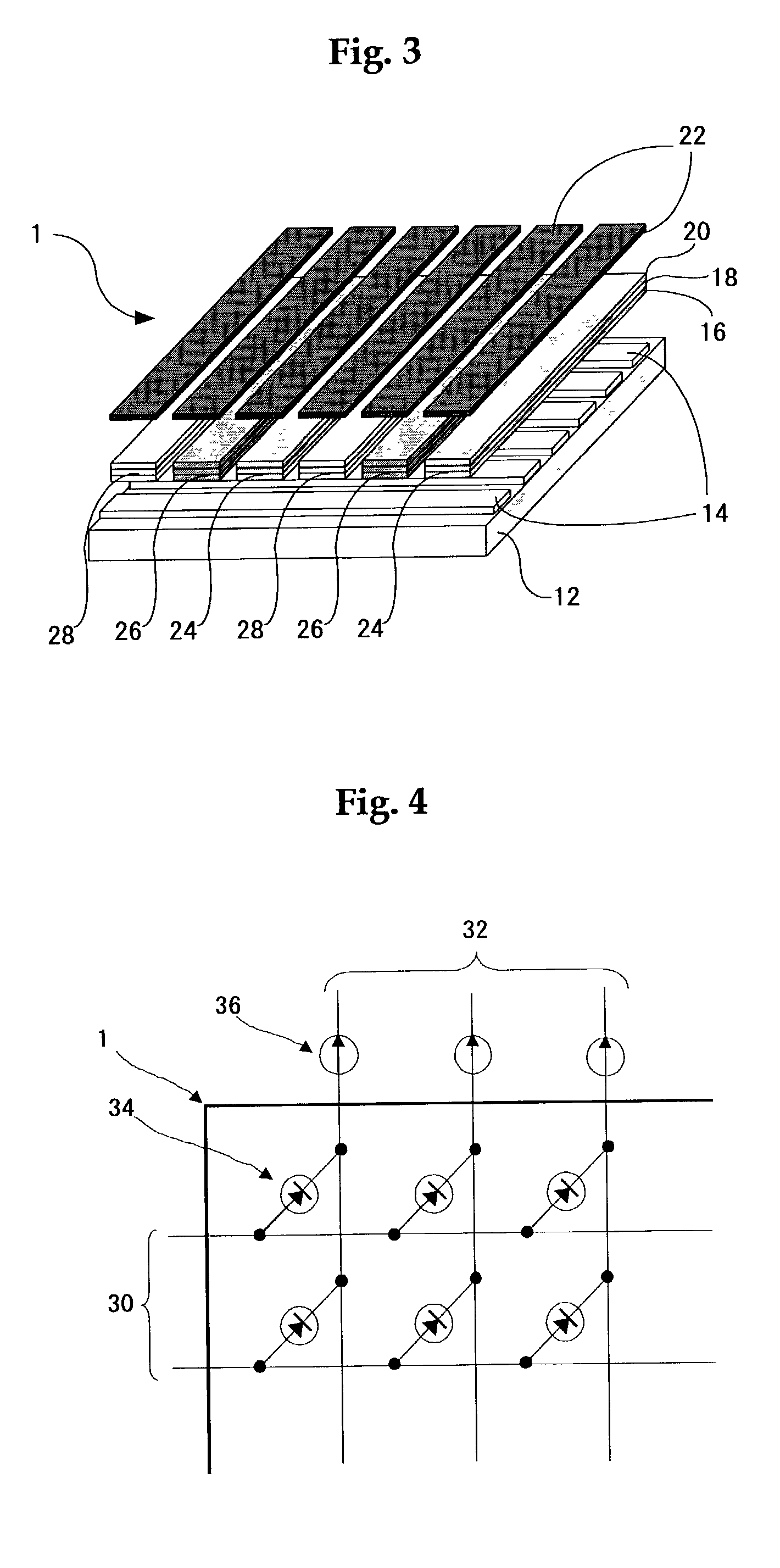Organic EL element and organic EL display
a technology of organic el and organic el, which is applied in the direction of discharge tube luminescnet screen, other domestic articles, natural mineral layered products, etc., can solve the problems of color purity, el properties, color purity, and insufficient purity of blue light emission, and achieve excellent light-emitting efficiency, light-emitting luminance and color purity of blue light, and excellent light-emitting efficiency.
- Summary
- Abstract
- Description
- Claims
- Application Information
AI Technical Summary
Benefits of technology
Problems solved by technology
Method used
Image
Examples
example 1
[0144]An organic EL element of the laminated type using 1,3,6,8-tetraphenylpyrene and 4,4′-bis(9-carbazolyl)-biphenyl (CBP) for the light-emitting layer was manufactured as follows. A glass substrate on which an ITO electrode was formed as an positive electrode was ultrasonically cleaned using water, acetone and isopropyl alcohol. After UV ozonization, using a vacuum vapor deposition device (degree of vacuum=1×10−6 Torr (1.3×10−4 Pa), substrate-temperature=room temperature), m-MTDATA was formed as a positive hole injecting layer to cover this ITO electrode to a thickness of 30 nm. Next NPD, which is a positive hole transporting layer, was coated on the m-MTDATA positive hole injecting layer to a thickness of 20 nm. Next, a light-emitting layer of thickness 30 nm was coated on the above NPD positive hole transporting layer by simultaneous vapor deposition, so that the 1,3,6,8-tetraphenylpyrene and 4,4′-bis(9-carbazolyl)-biphenyl (CBP) formed 90 molecules of CBP (90 mols, 90% by mass)...
example 2
[0146]An organic EL element was manufactured as in Example 1, except that the vapor deposition ratio of 1,3,6,8-tetraphenylpyrene and 4,4′-bis(9-carbazolyl)-biphenyl (CBP) was 99 molecules of CBP (99 mols, 99% by mass) relative to one molecule of 1,3,6,8-tetraphenylpyrene (1 mol, 1% by mass).
[0147]When a voltage was applied to the ITO electrode (positive electrode) and Al—Li alloy (negative electrode) in the manufactured organic EL element, in this organic EL element, a blue light emission was observed at a voltage of 5V or higher, and at an applied voltage of 10V, a high purity blue light emission of light-emitting luminance 850 cd / m2 (CIE color coordinates of EL light emission: x=0.161, y=0.072) was observed.
example 3
[0148]An organic EL element was manufactured as in Example 1, except that the vapor deposition ratio of 1,3,6,8-tetraphenylpyrene and 4,4′-bis(9-carbazolyl)-biphenyl (CBP) was 95 molecules of CBP (95 mols, 95% by mass) relative to 5 molecules of 1,3,6, 8-tetraphenylpyrene (5 mol, 5% by mass).
[0149]When a voltage was applied to the ITO electrode (positive electrode) and Al—Li alloy (negative electrode) in the manufactured organic EL element, in this organic EL element, a blue light emission was observed at a voltage of 4V or higher, and at an applied voltage of 10V, a high purity blue light emission of light-emitting luminance 1580 cd / m2 (CIE color coordinates of EL light emission: x=0.159, y=0.070) was observed.
PUM
| Property | Measurement | Unit |
|---|---|---|
| thickness | aaaaa | aaaaa |
| light-emitting wavelength | aaaaa | aaaaa |
| optical absorption wavelength | aaaaa | aaaaa |
Abstract
Description
Claims
Application Information
 Login to View More
Login to View More - R&D
- Intellectual Property
- Life Sciences
- Materials
- Tech Scout
- Unparalleled Data Quality
- Higher Quality Content
- 60% Fewer Hallucinations
Browse by: Latest US Patents, China's latest patents, Technical Efficacy Thesaurus, Application Domain, Technology Topic, Popular Technical Reports.
© 2025 PatSnap. All rights reserved.Legal|Privacy policy|Modern Slavery Act Transparency Statement|Sitemap|About US| Contact US: help@patsnap.com



